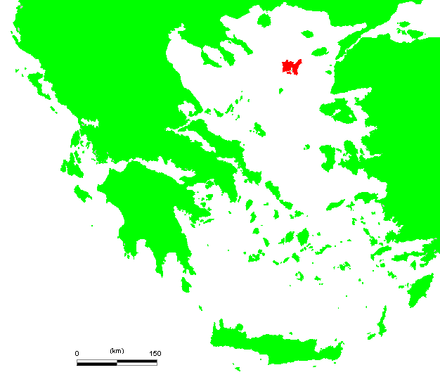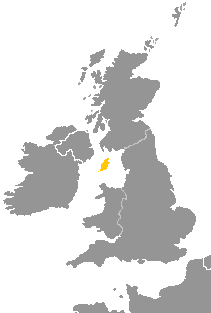Template:Infobox language/testcases
| This is the template test cases page for the sandbox of Template:Infobox language. to update the examples. If there are many examples of a complicated template, later ones may break due to limits in MediaWiki; see the HTML comment "NewPP limit report" in the rendered page. You can also use Special:ExpandTemplates to examine the results of template uses. You can test how this page looks in the different skins and parsers with these links: |
__EXPECTUNUSEDTEMPLATE__
Test 1
| Corresponds to German language. |
{{Infobox language}}
| {{Infobox language}} | {{Infobox language/sandbox}} | ||||||||||||||||||||||||||||||||||||||||||||||||||||||||||||||||||||||||||||||||
|---|---|---|---|---|---|---|---|---|---|---|---|---|---|---|---|---|---|---|---|---|---|---|---|---|---|---|---|---|---|---|---|---|---|---|---|---|---|---|---|---|---|---|---|---|---|---|---|---|---|---|---|---|---|---|---|---|---|---|---|---|---|---|---|---|---|---|---|---|---|---|---|---|---|---|---|---|---|---|---|---|---|
|
| ||||||||||||||||||||||||||||||||||||||||||||||||||||||||||||||||||||||||||||||||
- Notes
- References
- ^ Mikael Parkvall, "Världens 100 största språk 2010" (The World's 100 Largest Languages in 2010), in Nationalencyklopedin
- ^ 2.0 2.1 2.2 2.3 Ammon, Ulrich (November 2014). "Die Stellung der deutschen Sprache in der Welt" (in German) (1st ed.). Berlin, Germany: de Gruyter. ISBN 978-3-11-019298-8. Retrieved 24 July 2015.
{{cite web}}: CS1 maint: unrecognized language (link)[page needed] - ^ "Special Eurobarometer 386: Europeans and their languages" (PDF) (report). European Commission. June 2012. Archived from the original (PDF) on 6 January 2016. Retrieved 24 July 2015.
- ^ "Rat für deutsche Rechtschreibung – Über den Rat". Rechtschreibrat.ids-mannheim.de. Retrieved 11 October 2010.
- ^ 5.0 5.1 Goossens, Jan (1983). Niederdeutsch: Sprache und Literatur; Eine Einführung [Low German: language and literature; An introduction]. Vol. 1 (2., rev. and by a bibliogr. supplement expd. ed.). Neumünster: Karl Wachholtz. ISBN 3-529-04510-1.
Test 2
Ongota language; familycolor=unclassified, no fam2
| {{Infobox language}} | {{Infobox language/sandbox}} | ||||||||||||||||||||||||||||||||||||||||
|---|---|---|---|---|---|---|---|---|---|---|---|---|---|---|---|---|---|---|---|---|---|---|---|---|---|---|---|---|---|---|---|---|---|---|---|---|---|---|---|---|---|
|
| ||||||||||||||||||||||||||||||||||||||||
References
Tzeltal language
Italic formatting in nativename parameter
| {{Infobox language}} | {{Infobox language/sandbox}} | ||||||||||||||||||||||||||||||||||||||||||||
|---|---|---|---|---|---|---|---|---|---|---|---|---|---|---|---|---|---|---|---|---|---|---|---|---|---|---|---|---|---|---|---|---|---|---|---|---|---|---|---|---|---|---|---|---|---|
|
| ||||||||||||||||||||||||||||||||||||||||||||
References
- ^ 1.0 1.1 INALI (2012) México: Lenguas indígenas nacionales
Purépecha
| {{Infobox language}} | {{Infobox language/sandbox}} | ||||||||||||||||||||||||||||||||||||||||||||||||||||
|---|---|---|---|---|---|---|---|---|---|---|---|---|---|---|---|---|---|---|---|---|---|---|---|---|---|---|---|---|---|---|---|---|---|---|---|---|---|---|---|---|---|---|---|---|---|---|---|---|---|---|---|---|---|
|
| ||||||||||||||||||||||||||||||||||||||||||||||||||||
References
- ^ 1.0 1.1 INALI (2012) México: Lenguas indígenas nacionales
Yaqui language
| {{Infobox language}} | {{Infobox language/sandbox}} | ||||||||||||||||||||||||||||||||||||||||||||
|---|---|---|---|---|---|---|---|---|---|---|---|---|---|---|---|---|---|---|---|---|---|---|---|---|---|---|---|---|---|---|---|---|---|---|---|---|---|---|---|---|---|---|---|---|---|
|
| ||||||||||||||||||||||||||||||||||||||||||||
References
- ^ 1.0 1.1 INALI (2012) México: Lenguas indígenas nacionales
Eteocypriot
| {{Infobox language}} | {{Infobox language/sandbox}} | ||||||||||||||||||||||||||||||||||||||||||||
|---|---|---|---|---|---|---|---|---|---|---|---|---|---|---|---|---|---|---|---|---|---|---|---|---|---|---|---|---|---|---|---|---|---|---|---|---|---|---|---|---|---|---|---|---|---|
|
| ||||||||||||||||||||||||||||||||||||||||||||
References
- ^ 1.0 1.1 Eteocypriot at MultiTree on the Linguist List
Amto
| {{Infobox language}} | {{Infobox language/sandbox}} | ||||||||||||||||||||||||||||||||||||
|---|---|---|---|---|---|---|---|---|---|---|---|---|---|---|---|---|---|---|---|---|---|---|---|---|---|---|---|---|---|---|---|---|---|---|---|---|---|
|
| ||||||||||||||||||||||||||||||||||||
References
- ^ 1.0 1.1 Amto at Ethnologue (18th ed., 2015) (subscription required)
Missing ul end tag?
| {{Infobox language}} | {{Infobox language/sandbox}} | ||||||||||||||||||||||||||||||||||||
|---|---|---|---|---|---|---|---|---|---|---|---|---|---|---|---|---|---|---|---|---|---|---|---|---|---|---|---|---|---|---|---|---|---|---|---|---|---|
|
| ||||||||||||||||||||||||||||||||||||
iso2, iso2b, iso2t
iso2
{{Infobox language|iso2=aaa}}
| {{Infobox language}} | {{Infobox language/sandbox}} | ||||||||||||||||||||
|---|---|---|---|---|---|---|---|---|---|---|---|---|---|---|---|---|---|---|---|---|---|
|
| ||||||||||||||||||||
iso2b
{{Infobox language|iso2b=bbb}}
| {{Infobox language}} | {{Infobox language/sandbox}} | ||||||||||||||||||||
|---|---|---|---|---|---|---|---|---|---|---|---|---|---|---|---|---|---|---|---|---|---|
|
| ||||||||||||||||||||
iso2t
{{Infobox language|iso2t=ttt}}
| {{Infobox language}} | {{Infobox language/sandbox}} | ||||||||||||||||||||
|---|---|---|---|---|---|---|---|---|---|---|---|---|---|---|---|---|---|---|---|---|---|
|
| ||||||||||||||||||||
iso2, iso2b
{{Infobox language|iso2=aaa |iso2b=bbb}}
| {{Infobox language}} | {{Infobox language/sandbox}} | ||||||||||||||||||||
|---|---|---|---|---|---|---|---|---|---|---|---|---|---|---|---|---|---|---|---|---|---|
|
| ||||||||||||||||||||
iso2, iso2t
{{Infobox language|iso2=aaa |iso2t=ttt}}
| {{Infobox language}} | {{Infobox language/sandbox}} | ||||||||||||||||||||
|---|---|---|---|---|---|---|---|---|---|---|---|---|---|---|---|---|---|---|---|---|---|
|
| ||||||||||||||||||||
iso2b, iso2t
{{Infobox language|iso2b=bbb |iso2t=ttt}}
| {{Infobox language}} | {{Infobox language/sandbox}} | ||||||||||||||||||||
|---|---|---|---|---|---|---|---|---|---|---|---|---|---|---|---|---|---|---|---|---|---|
|
| ||||||||||||||||||||
iso2, iso2b, iso2t
{{Infobox language|iso2=aaa |iso2b=bbb |iso2t=ttt}}
| {{Infobox language}} | {{Infobox language/sandbox}} | ||||||||||||||||||||
|---|---|---|---|---|---|---|---|---|---|---|---|---|---|---|---|---|---|---|---|---|---|
|
| ||||||||||||||||||||
Test 11
| {{Infobox language}} | {{Infobox language/sandbox}} | ||||||||||||||||||||||||||||||||||||
|---|---|---|---|---|---|---|---|---|---|---|---|---|---|---|---|---|---|---|---|---|---|---|---|---|---|---|---|---|---|---|---|---|---|---|---|---|---|
|
| ||||||||||||||||||||||||||||||||||||
Test scale
| {{Infobox language}} | {{Infobox language/sandbox}} | ||||||||||||||||||||||||
|---|---|---|---|---|---|---|---|---|---|---|---|---|---|---|---|---|---|---|---|---|---|---|---|---|---|
|
| ||||||||||||||||||||||||
Language status test
| {{Infobox language}} | {{Infobox language/sandbox}} | ||||||||||||||||||||||||||||||||||||||||||||||||||||||||||||||||||||||||||||||||||||||||
|---|---|---|---|---|---|---|---|---|---|---|---|---|---|---|---|---|---|---|---|---|---|---|---|---|---|---|---|---|---|---|---|---|---|---|---|---|---|---|---|---|---|---|---|---|---|---|---|---|---|---|---|---|---|---|---|---|---|---|---|---|---|---|---|---|---|---|---|---|---|---|---|---|---|---|---|---|---|---|---|---|---|---|---|---|---|---|---|---|---|
|
| ||||||||||||||||||||||||||||||||||||||||||||||||||||||||||||||||||||||||||||||||||||||||
| {{Infobox language}} | {{Infobox language/sandbox}} | ||||||||||||||||
|---|---|---|---|---|---|---|---|---|---|---|---|---|---|---|---|---|---|
|
| ||||||||||||||||
| {{Infobox language}} | {{Infobox language/sandbox}} | ||||||||||||||||
|---|---|---|---|---|---|---|---|---|---|---|---|---|---|---|---|---|---|
|
| ||||||||||||||||
| {{Infobox language}} | {{Infobox language/sandbox}} | ||||||||||||||||
|---|---|---|---|---|---|---|---|---|---|---|---|---|---|---|---|---|---|
|
| ||||||||||||||||
| {{Infobox language}} | {{Infobox language/sandbox}} | ||||||||||||||||
|---|---|---|---|---|---|---|---|---|---|---|---|---|---|---|---|---|---|
|
| ||||||||||||||||
| {{Infobox language}} | {{Infobox language/sandbox}} | ||||||||||||||||
|---|---|---|---|---|---|---|---|---|---|---|---|---|---|---|---|---|---|
|
| ||||||||||||||||
Test Lint error with unclassified familycolor
The time allocated for running scripts has expired.
ancestor15 test
The time allocated for running scripts has expired.
(native_)pronunciation and English_pronunciation test
The time allocated for running scripts has expired.
proto_language tests
ancestor and child(1-2) test (proto_language)
The time allocated for running scripts has expired.
ancestor2 test (proto_language)
The time allocated for running scripts has expired.
No proto_language tests
ancestor test (no proto_language)
The time allocated for running scripts has expired.
ancestor2 test (no proto_language)
The time allocated for running scripts has expired.
lingua test
The time allocated for running scripts has expired.
lingua 2-10 test
| Old | New |
|---|---|
| The time allocated for running scripts has expired. | The time allocated for running scripts has expired. |
Notes
The time allocated for running scripts has expired.
The time allocated for running scripts has expired.
- ^ The time allocated for running scripts has expired.
- ^ 2.0 2.1 Manx at Ethnologue (21st ed., 2018)

- ^ 3.0 3.1 Y202 Ndrangith at the Australian Indigenous Languages Database, Australian Institute of Aboriginal and Torres Strait Islander Studies
The time allocated for running scripts has expired.







